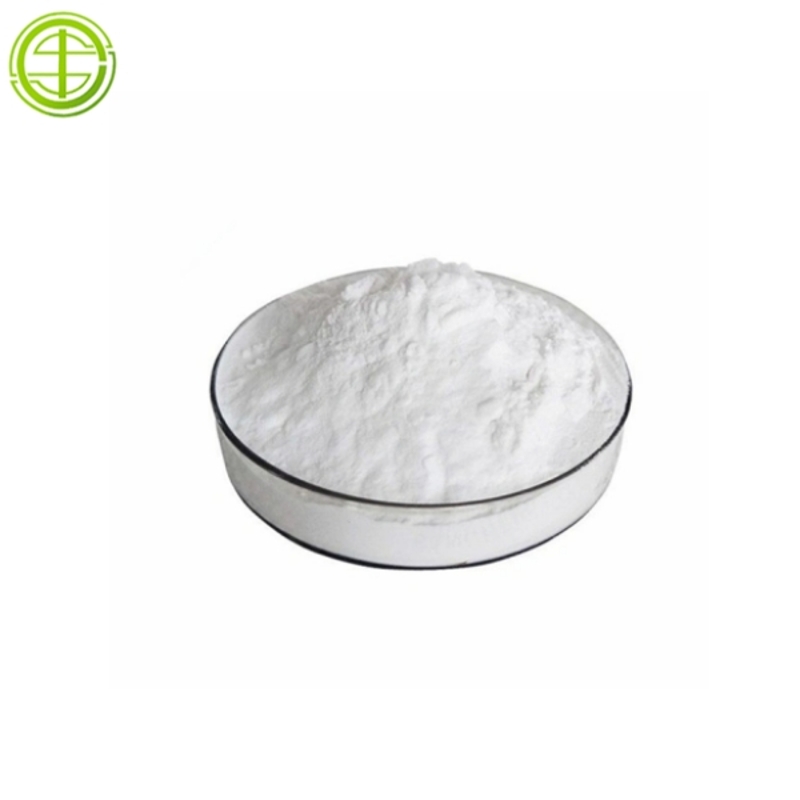-
Categories
-
Pharmaceutical Intermediates
-
Active Pharmaceutical Ingredients
-
Food Additives
- Industrial Coatings
- Agrochemicals
- Dyes and Pigments
- Surfactant
- Flavors and Fragrances
- Chemical Reagents
- Catalyst and Auxiliary
- Natural Products
- Inorganic Chemistry
-
Organic Chemistry
-
Biochemical Engineering
- Analytical Chemistry
- Cosmetic Ingredient
-
Pharmaceutical Intermediates
Promotion
ECHEMI Mall
Wholesale
Weekly Price
Exhibition
News
-
Trade Service
Amaranth (Amaranthus tricolor L.
) is rich in VC and other nutrients
.
Fresh-cut vegetables are ready-to-eat products made after fresh vegetables are sorted, cleaned and processed, which have the advantages of
convenience and freshness.
However, fresh cutting can cause mechanical damage to vegetables, thereby speeding up the respiration rate of vegetables, in addition, cutting wounds are susceptible to microbial contamination, accelerating the deterioration of vegetable quality
.
Therefore, effective preservation technology is needed to maintain the quality
of fresh-cut vegetables.
Jin Siyuan and Xie Jing* from the School of Food Science of Shanghai Ocean University intend to treat fresh-cut amaranth by combining LED460 nm blue light and fennel essential oil with different optical quantum flux densities, and evaluate the fresh-keeping effect of the composite technology on fresh-cut amaranth by combining the physiological and biochemical indexes and antioxidant enzyme activities of amaranth, in order to provide a theoretical reference
for extending the shelf life of fresh-cut amaranth.
1.
Effects of different optical quantum flux densities combined with fennel essential oil treatment on sensory scores of fresh-cut amaranth
It can be seen from Figure 2 that the quality of fresh-cut amaranth decreases to varying degrees with the extension of storage time
.
On the 8th day, all the scores of the control group were lower than 5 points, and there was obvious quality deterioration
.
On the 10th day, the leaves of the experimental group showed varying degrees of water loss, black spots appeared on the surface, and corruption
appeared.
The T4 experimental group scored the best, followed by the T3 experimental group
.
The shelf life of each treatment group was significantly higher than that of the control group
.
It can be seen from Figure 2C that the odor score is generally low due to the volatilization of fennel essential oil in the later stage of storage, and no obvious fennel odor
appears in the early stage of storage.
Based on the results of three sensory scores, the experimental group treated with blue light and fennel essential oil could prolong the shelf life of fresh-cut amaranth, and the T4 group had the best
effect.
2.
Effects of different optical quantum flux densities combined with fennel essential oil treatment on chlorophyll content of fresh-cut amaranth
It can be seen from Figure 3 that the chlorophyll content of the samples treated with blue light and fennel essential oil showed an overall trend of first increasing and then decreasing during storage, and peaked on the 6th day
.
In contrast, the control group showed a decreasing trend
during storage.
During storage, the chlorophyll content of T2, T3 and T4 groups was significantly higher than that in the control group (P<0.
05) on the 4th and 6th days, showing an upward trend<b12>.
This is because light stimulates magnesium ion chelase activity and increases chlorophyll content, thereby delaying the aging and yellowing process
of fresh-cut amaranth.
During storage, the chlorophyll content in the T1 group was significantly higher than that in the control group (P<0.
05).
<b14> This is mainly because fennel essential oil can effectively delay the decline of chlorophyll enzyme activity and demagnesium chelase activity
.
The chlorophyll content of each group showed a downward trend in the later stage of storage because the activity of demagnesium-demagnesium chlorophyllase increased
with the aging of plant tissues.
The results showed that fresh-cut amaranth treated with blue light and fennel essential oil could effectively increase chlorophyll content, delay the aging of amaranth and prolong shelf life
.
The results of chlorophyll content analysis were corroborated with sensory scores, and the T4 group had the best
effect.
3.
Effects of different optical quantum flux densities combined with fennel essential oil treatment on the mass fraction of soluble solids in fresh-cut amaranth
It can be seen from Figure 4 that the T2, T3 and T4 groups can maintain the mass fraction of soluble solids in storage for 2, 4 and 6 days, while the control group shows an overall downward trend
.
At the end of storage, the mass fractions of soluble solids in the control group, T1 and T3 groups were 2.
5%, 2.
9% and 3.
5%, respectively, and there were significant differences between the treatment group and the control group (P<0.
05<b11>).
Fennel essential oil can effectively reduce the decomposition rate
of sugars in fresh-cut amaranth.
LED460 nm blue light promotes photosynthesis of fresh-cut amaranth, thereby increasing the soluble sugar content of fresh-cut amaranth
.
In the later stage of storage, the mass fraction of soluble solids showed a downward trend
.
This is because fresh-cut amaranth continues to respire, soluble solids are consumed at a higher rate than the production rate, and there is no adequate nutrient supply
from the outside world.
In summary, the synergistic effect of blue light irradiation and fennel essential oil can effectively delay the decline
of soluble solids mass fraction.
4.
Effects of different optical quantum flux densities combined with fennel essential oil treatment on VC content of fresh-cut amaranth
It can be seen from Figure 5 that the VC content of T1 group and control group showed a downward trend with the extension of storage time, and the downward trend of the control group was more obvious
.
The VC content of T2, T3 and T4 groups showed a trend
of first increasing and then decreasing.
The increase in VC content in the T4 group was more obvious than that in the T2 and T3 groups, and peaked on the 6th day
.
The increase in VC content was mainly caused by
the stimulation of photosynthesis and respiration in fresh-cut amaranth by blue light irradiation.
Anise essential oil may be catalyzed by blue light to produce anisaldehyde, which can effectively inhibit the decline
of VC content.
In the later stage of storage, the decline trend of VC content in the treatment group was more obvious
than that in the T1 group and the control group.
This may be due to photooxidative damage of fresh-cut amaranth caused by blue light irradiation, resulting in a rapid decrease
in VC content.
The results showed that the T4 group could significantly increase the VC content of fresh-cut amaranth and delay the aging of
fresh-cut amaranth in the early stage of storage.
5.
Effect of different optical quantum flux densities combined with fennel essential oil treatment on nitrite content of fresh-cut amaranth
It can be seen from Figure 6 that the nitrite content of the control group during storage was significantly higher than that of other groups (P<0.
05).
<b10> The blue light receptor chromophore contains flavin and pterin, and the nitrate reductase prosthetic group contains flavin adenine dinucleotide and pterin, so blue light can effectively stimulate pterin in the nitrate reductase prosthetic group, enhance the activity of nitrate reductase, and then promote nitrate metabolism and decomposition
.
The rapid increase of nitrite content in the control group in the first 4 days was due to the growth of spoilage bacteria, and nitrate was converted to nitrite
under the action of nitroreductase.
6.
Different optical quantum flux densities combined with fennel essential oil treatment have antibacterial effect on fresh-cut amaranth
It can be seen from Fig.
7 that the T1, T2, T3 and T4 groups had obvious antibacterial effects on fresh-cut amaranth on the 2nd, 4th and 6th days, the antibacterial effects of T2, T3 and T4 groups were significantly better than those in the T1 group, and the total number of colonies in the treatment group in the early storage period was significantly lower than that of the control group (P<0.
05).
<b10> This is mainly because of the synergistic effect
of blue light and fennel essential oil.
Blue light inhibits pathogenic bacteria
such as Salmonella, Escherichia coli and Staphylococcus aureus.
Blue light stimulates bacterial endogenous coproporphyrin to produce excited oxygen, which destroys bacterial tissue structure
.
Fennel essential oil can effectively inhibit mold and yeast
.
Anise essential oil contains anisole, which can destroy the cell membrane and cell wall of spoilage bacteria, affect cell metabolism, and cause apoptosis
of spoilage bacteria.
In summary, the synergistic effect of blue light and fennel essential oil can effectively inhibit bacterial reproduction
.
7.
Effects of different optical quantum flux densities combined with fennel essential oil treatment on the quality loss rate of fresh-cut amaranth
It can be seen from Figure 8 that the quality loss rate shows an increasing trend
with the extension of storage time.
On day 6, the mass loss rates in the T2, T3 and T4 groups were significantly higher than those in the control group and T1 group (P<0.
05).
<b11> This is mainly because blue light opens the K+ influx channel, causing the expansion of the leaf stomata, intensifying the transpiration of fresh-cut amaranth leaves, causing rapid loss of internal water, and increasing the moisture content of free water of fresh-cut amaranth, resulting in a decrease
in free water content.
On days 2 and 4, there was no significant
difference between the T2 and T3 groups and the T1 and control groups.
During storage, T1 group can effectively reduce water loss
.
This may be due to the fact that fennel essential oil covers the leaves to a certain extent, inhibits the transpiration of fresh-cut amaranth, and has a water-retaining effect
.
Each treatment group wrapped the PE film, the relative humidity increased, and the quality loss rate was controlled within the acceptable range
.
In the later stage of storage, the mass loss rate of T4 group was significantly higher than that of T3, T2, T1 and control group (P<0.
05).
<b18>
It can be seen from Figure 9 that compared with the control group on day 0, the free water content of fresh-cut amaranth treated with blue light and fennel essential oil after storage for 12 days decreased significantly, and the T4 group decreased by 38.
44%.
The results show that the fresh-cut amaranth treated with blue light has vigorous life activities during storage, and the light provides energy for the life activities of plants in the process of energy
storage.
Compared with the 0th day, after 12 days of storage, the peak area of free water decreased by 22.
73% in the T1 group and 28.
93% in the control group, which confirmed the results of free water content and quality loss rate, indicating that fennel essential oil treatment could effectively delay water loss
.
After storage for 12 days, compared with the control group, the content of unsuitable flowing water in the T2, T3 and T4 groups decreased significantly
.
After storage for 12 days, compared with the control group, the bound water content of T2, T3 and T4 groups showed an upward trend, and the T4 group increased significantly (P<0.
05).
<b14> This is mainly because blue light promotes the metabolic activity of fresh-cut amaranth, and physiological activities such as bacterial reproduction and oxidation reaction require a large amount of water to participate, resulting in an increase
in bound water.
The combined water peak area of the T4 group also showed that fresh-cut amaranth could maintain high plant activity characteristics
under 30 μmol/(m2·s) blue light treatment.
8.
Effects of different optical quantum flux densities combined with fennel essential oil treatment on SOD, POD and MDA levels of fresh-cut amaranth
It can be seen from Figs.
10 and 11 that the POD activity and SOD activity of the T2, T3 and T4 groups during storage were significantly higher than those in the control group (P<0.
05).
<b10> On the fourth day, SOD activity in T4, T3, T2 and T1 groups reached peak levels of 21.
55, 19.
79, 18.
88 and 17.
79 U/mg, respectively, among which SOD activity was highest in T4 group
.
On day 6, the POD activity of the T4 group reached a peak, which was 58.
56% higher than that of the control group and 16.
19%
higher than that of the T1 group.
Blue light can induce plant gene locus responses, among which the response of POD activity sites is more sensitive
.
Blue light can cause the accumulation of hydrogen peroxide and remove excess active oxygen species
from plants.
In summary, the combination treatment of blue light and fennel essential oil can effectively improve the antioxidant enzyme activity
of fresh-cut amaranth.
Conclusion
The results of this experiment showed that 30 μmol/(m2·s) blue light combined with 0.35 μL/mL fennel essential oil could effectively slow down the quality deterioration of fresh-cut amaranth, effectively control the color change of fresh-cut amaranth and inhibit the growth of the total number of colonies during storage, improve the antioxidant enzyme activity of fresh-cut amaranth, and the shelf life reached 10 days
.
In addition, 10 and 20 μmol/(m2·s) blue light combined with 0.
35 μL/mL fennel essential oil treatment of fresh-cut amaranth performed well in sensory evaluation and maintenance of chlorophyll content and VC content
.
Therefore, blue light combined with fennel essential oil treatment can be used as a viable technique
to maintain the quality of fresh-cut amaranth.
This article "The Preservation Mechanism of Blue Light Synergistic Fennel Essential Oil on Fresh-cut Amaranth" is from Food Science, Vol.
43, No.
17, 2022, pages 290-296, authors: Jin Siyuan, Xie Jing
.
DOI:10.
7506/spkx1002-6630-20210711-112
。 Click to view information about
the article.







